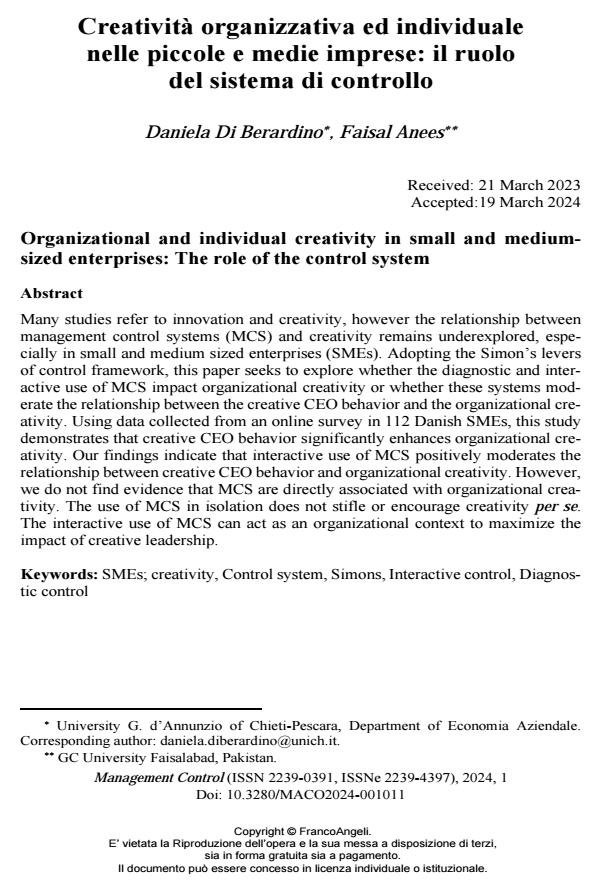Creatività organizzativa ed individuale nelle piccole e medie imprese: il ruolo del sistema di controllo
Titolo Rivista MANAGEMENT CONTROL
Autori/Curatori Daniela Di Berardino, Faisal Anees
Anno di pubblicazione 2024 Fascicolo 2024/1
Lingua Italiano Numero pagine 23 P. 227-249 Dimensione file 259 KB
DOI 10.3280/MACO2024-001011
Il DOI è il codice a barre della proprietà intellettuale: per saperne di più
clicca qui
Qui sotto puoi vedere in anteprima la prima pagina di questo articolo.
Se questo articolo ti interessa, lo puoi acquistare (e scaricare in formato pdf) seguendo le facili indicazioni per acquistare il download credit. Acquista Download Credits per scaricare questo Articolo in formato PDF

FrancoAngeli è membro della Publishers International Linking Association, Inc (PILA)associazione indipendente e non profit per facilitare (attraverso i servizi tecnologici implementati da CrossRef.org) l’accesso degli studiosi ai contenuti digitali nelle pubblicazioni professionali e scientifiche
Many studies refer to innovation and creativity, however the relationship between management control systems (MCS) and creativity remains underexplored, espe-cially in small and medium sized enterprises (SMEs). Adopting the Simon’s levers of control framework, this paper seeks to explore whether the diagnostic and inter-active use of MCS impact organizational creativity or whether these systems moderate the relationship between the creative CEO behavior and the organiza-tional creativity. Using data collected from an online survey in 112 Danish SMEs, this study demonstrates that creative CEO behavior significantly enhances organi-zational creativity. Our findings indicate that interactive use of MCS positively moderates the relationship between creative CEO behavior and organizational creativity. However, we do not find evidence that MCS are directly associated with organizational creativity. The use of MCS in isolation does not stifle or encourage creativity per se. The interactive use of MCS can act as an organizational context to maximize the impact of creative leadership.
Parole chiave:SMEs; creativity, Control system, Simons, Interactive control, Diag-nostic control
Daniela Di Berardino, Faisal Anees, Creatività organizzativa ed individuale nelle piccole e medie imprese: il ruolo del sistema di controllo in "MANAGEMENT CONTROL" 1/2024, pp 227-249, DOI: 10.3280/MACO2024-001011